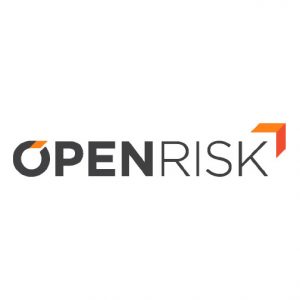Technological advances have made a “Semantic Blockchain” feasible. This is the ability to map smart contracts on the blockchain to qualitative information about the underlying data. It’s a realistic solution to complex problems of automation and operational efficiency. A guest post from OpenRisk Technologies.
“I have a dream for a web [in which computers] become capable of analyzing all the data on the Web: the content, links and transactions between people and computers. A “Semantic Web”.– Tim Berners-Lee, Weaving the Web
While creating a smart contract that embeds data sounds straightforward on paper, the reality is that the mechanics are highly complex. An effective smart contract needs information that connects it to context, allowing the end user and intermediaries to know who, what, where, when and why the contract will make or lose money. This robust understanding of context is at the heart of investments and risk management; even algorithmic trading computers are working from data that supply the context.
But we are not at the point where smart contracts can live up to their promise. The mechanics of smart contracts do not yet have the underlying backbone of information – the Semantic Web – that allows investors to capture knowledge about a contract in a reasonable span of time to make an investment decision. This is the next big leap forward, and with it come a number of important outcomes for capital markets.
Understanding the Semantic Web
The Semantic Web, also called Web 3.0, can be thought of as a common language: terminology we can all agree on to then engage in business. It is the mapping and definitions of key concepts and details in context. For example, a user can make a Google search for ice and transportation, looking for a way to ship food. The search for ice will yield a set of results and transportation will yield other results. But by combining the two words together, the user receives more specific information for their needs. Now, consider taking dozens of words from a complex derivatives contract and looking to narrow down to what is most important for the search; this can be problematic.
In capital markets, a smart contract on the blockchain references a set of variables, each one with a rich and robust context of its own. A corn futures contract may contain information on delivery date, price, corn type and even the grower. A securities loan could reference the credit information of the lender, the term, and pre- and post-trade transparency. Each variable can be digested, packaged together, or can be unbundled for understanding risk and reward across exposures in a detailed context.
As another example of context, Standard & Poor’s has its own set of ratings, which is different than Moody’s or Fitch. A search for a short bond with an A-1 rating must by inference be an S&P rating. It cannot be Moody’s which would have a P-1 rating, or Fitch, which would have an F1 rating. By entering in A-1, a computer can understand that the user is referencing S&P based on the context of the search.
Conducting a Google search for A-1 is easy, but no data sets for bespoke derivatives contracts and peripheral market data to supplement it exist online. Certainly none that cross a wide range of margin, credit risk and bond holding information uniformly, that can then be tied to a trading price for a specific client at 2PM on a Thursday afternoon. This would require much more information, and that is where the Semantic Web comes in.
Industry organizations and language standardization
Two industry initiatives have already taken steps towards creating a framework for capital markets. ISDA’s Common Domain Model (CDM) seeks to provide standardized models for derivatives products to be used on smart contracts on the blockchain. According to ISDA, “The ISDA CDM is intended to provide an industry standard blueprint for how derivatives are traded and managed across the lifecycle, and how each step in the process can be represented in an efficient, standardized fashion. Establishing a common set of data and processing standards will facilitate interoperability between firms and technology platforms.” ISDA is encouraging industry adoption of the CDM as a way to migrate paper and bespoke OTC derivatives technology platforms to a universal model.
The EDM Council has created the Financial Industry Business Ontology (FIBO) to standardize what words actually mean in finance. A brief review of language including blockchain, distributed ledger, artificial intelligence, machine learning and deductive reasoning systems can all yield overlapping results; FIBO sets out to solve this problem. As the Council notes, “Think of FIBO as a ‘Rosetta stone’ to help users create and explore connections and relationships between instruments, business entities and counterparties to determine expected cash flow, unravel risk and identify transitive relationships that were not previously possible.”
By weaving together derivatives models for how smart contracts should operate with language that standardizes terms for machine reading, the building blocks come together for the Semantic Blockchain. This is a long-term project and we are just at the beginning. The leadership and support of industry associations is critical in this effort.
OpenRisk is building a market utility for ISDA contract rationalization
When looking at the potential for the Semantic Web in capital markets, the big question is where will all this reference data be held? It is great to say that a smart contract will map back to information that can be used in a firm’s analysis, but the information must reside somewhere.
At OpenRisk, we have taken on the challenge of building a mapping reference tool for holistic data management in derivatives risk management. We are creating a market utility that can be used by any smart contract user or developer; this is a golden source of data for any financial contract. Put another way, we are adding the product-specific elements of the Semantic Web for use by capital markets industry professionals.
We are focusing initially on rationalization of ISDA CSAs – a Semantic Smart Contract. A smart contract that emphasizes the meaning of legal and operational terms in a CSA, with embedded margin rules, can be negotiated and managed on the blockchain. End users will know the asset class, counterparty and even national regulations and Basel Committee/IOSCO associated rules. This is the first iteration of the Semantic Blockchain that will allow smart contract automation.
To deepen the data, we are creating an open interface to help with semantic mapping. Many smart contracts, just like derivatives contracts in paper form, have their own variations. A user interface allows individuals and firms to upload existing executed CSAs, which will automatically be rationalized, correlated with standardized meanings of contractual covenants, correlated with firm specific terminologies, and finally fine-tuned for manually curating any gaps that machines could not identify. The process is equally seamless for negotiating a new CSA and tying back to trades and peripheral market data required for day-to-day business operations.
Later, instead of a firm having to hunt down bespoke information from the originators of an OTC derivative, the data can be referenced using our utility. An added advantage of a Semantic Smart Contract is that it becomes a golden source for internal business operations, external communications to counterparties, regulators, other market participants and utilities.
The creation of an industry utility for Semantic Blockchain data is one piece of infrastructure that is recreating how capital markets work. Reference data must be read by someone or something of course, and we expect that machines will do the heavy lifting of utilizing reference data for risk management, legal analysis and business automation. After all, smart contracts may be smart, and artificial intelligence may be intelligent, but they both rely on good data to move from beta project to practical applications.
The future is only beginning for the Semantic Blockchain in capital markets, and market participants should expect substantial evolution in the next several years. OpenRisk is excited to be engaged in this process.
 Narasimha Kodihalli is the Founder and CEO at OpenRisk Technologies. He is spearheading the creation of an innovative Collateral and Liquidity Management platform using Semantic Web, AI, and blockchain technologies. He is a business savvy technology executive with nearly two decades of practice in building and managing enterprise technology solutions for financial services firms. Nara started OpenRisk in 2016 after spending more than a decade in the derivatives collateral management market space.
Narasimha Kodihalli is the Founder and CEO at OpenRisk Technologies. He is spearheading the creation of an innovative Collateral and Liquidity Management platform using Semantic Web, AI, and blockchain technologies. He is a business savvy technology executive with nearly two decades of practice in building and managing enterprise technology solutions for financial services firms. Nara started OpenRisk in 2016 after spending more than a decade in the derivatives collateral management market space.
Nara holds an Executive MBA from TRIUM Program (jointly issued by NYU Stern School of Business, LSE London, and HEC School of Management, Paris).
Connect with Nara on LinkedIn


